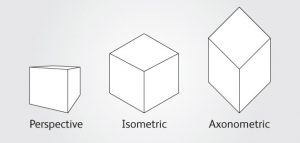In alphabetical order
A
Affordable housing
‘Dwellings built specifically for those on incomes that deny them the opportunity to purchase or rent on the open market’ (Pacione, 2009, p.196)
A
Agglomeration economies
Agglomeration economies refer to ‘the benefits that come when firms and people locate near one another together in cities and industrial clusters’ (Glaeser, 2010, p.1).
A
Anthropocene
A
Asian city
Asian cities are often categorized as an ‘exotic others’ in relation to their Western counterparts, by being elevated onto a mythical pedestal, yet Asian cities should not only be explored through their unique qualities, localisms and unique ‘cosmopolitan vernacular’ expressions, but also by looking at how they influence and are influenced by other cities (Ren & Luger, 2015).
A
Asian Development Bank
‘The Asian Development Bank (ADB) is an international development finance institution dedicated to reducing poverty in Asia and the Pacific through loans, grants, research and technical assistance to its member countries, as well as investments in private companies.’ (Regional Knowledge Center, 2016)
A
Asian Infrastructure Development Bank
‘The Asian Infrastructure Investment Bank is a new multilateral development bank founded to bring countries together to address the daunting infrastructure needs across Asia. Headquartered in Beijing, AIIB commenced its operation in January 2016 and has now grown to 77 approved members from all over the world. Its mission is to improve economic and social development in Asia by investing in high quality, financially viable and environmentally friendly infrastructure projects.’ (Inter-American Development Bank 2017)
A
Asset-based Community Development (ABCD)
A
Automobile cities
The automobile in the cities facilitated the uninhibited outward expansion of the city due that people and business were no longer constrained to the fixed-tract public transport systems or walking-scale environment. The automobile cities are feature with low density, separated uses, arterial grid and decentralized urban form (Schiller et al., 2010, p. 27-28)
A
Axonometric projection
‘Axonometric projection creates a true plan set at 45º, which retains the original orthogonal geometry of the plan. Planning drawings can also be effective represented as axonometric projections, showing the relationships between buildings and topography’

(Drawing projections, Designing Buildings Wiki, 2018).
Reference List
Drawing projections. (2018). Designing Buildings Wiki. Retrieved from https://www.designingbuildings.co.uk/wiki/Drawing_projections
Glaeser, E.L. (2010). Agglomeration Economics. Chicago: University of Chicago Press.
Inter-American Development Bank. (2017, May 16). The IDB Group and the Asian Infrastructure Investment Bank Expand Ties[Press release]. Retrieved from https://www.iadb.org/en/news/idb-group-and-asian-infrastructure-investment-bank-expand-ties
Nurture Development Ltd. (2018). Asset Based Community Development (ABCD). Retrieved from https://www.nurturedevelopment.org/asset-based-community-development/.
Pacione, M. (2009). Housing. International Encyclopedia of Human Geography, p.196-200.
Planning Tank. (2019a). Advocacy Planning Concept. Retrieved from https://planningtank.com/planning-theory/advocacy-planning-concept.
Regional Knowledge Center. (2016). The Asian Development Bank (ADB). Retrieved from https://www.greeninvest-ca.eu/content/asian-development-bank-adb
Ren, J., & Luger, J. (2015). Comparative Urbanism and the ‘Asian City’: Implications for Research and Theory. International Journal of Urban and Regional Research, 39(1), 145-156.
Schiller, P. L. Bruun, E. C. and Kenworthy, J. R. An Introduction to Sustainable Transportation: Policy, Planning and Implementation. London: Routledge, 2010
Trischler, H. (2013). Introduction. RCC Perspectives, (3), 5-8. Retrieved from http://www.jstor.org/stable/26240505